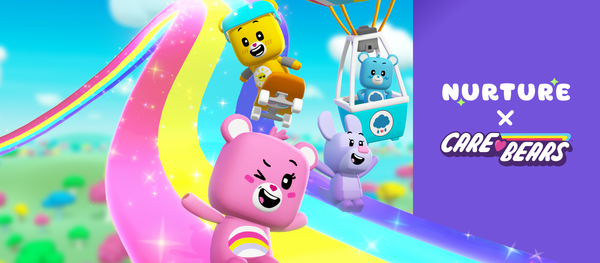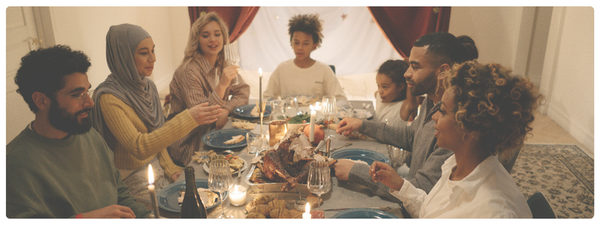The ability to think critically can empower nearly every part of a kid’s life — and who they grow up to be. Being able to creatively solve problems while regulating emotions and taking on new perspectives comes with practice.
Nurture’s core philosophies around the Life Preparedness Gap — or the space between what’s taught in school and what’s needed in the real world — positions critical thinking at the foundation. It’s an element of every other skill (e.g., creativity, empathy, financial literacy) and helps propel kids through academics, too.
In the digital era, when screens, shortcuts, and AI tempt quick fixes, many parents worry their children aren’t learning to think independently. This guide can help caregivers guide young kids, roughly ages 4–7, toward becoming lifelong problem solvers who:
- Ask “Why?”
- Explore responses
- Bounce back from frustration with curiosity
Research shows that this matters: even preschoolers begin to evaluate whether what they hear is true, and this ability strengthens as they engage in open-ended questioning and exploration. Without these early thinking muscles, kids risk relying on imitation rather than understanding, missing out on both academic depth and emotional agility.
Too many children are facing the world without the life skills toolkit to navigate misinformation, regulate their emotions, or creatively work through challenges. With scientific evidence, expert insights, hands-on strategies, and digital tools, we — the digital parents and caregivers — can close this gap in life skills. By helping develop their critical thinking abilities, we can help kids grow into thoughtful, adaptable individuals who can both think and feel their way through life’s puzzles.
Start by centering yourself on the meaning of critical thinking and problem solving for kids of this age range (4-7).
What is Critical Thinking for Young Kids?
Critical thinking is the ability to ask questions, make connections, and reflect before jumping to conclusions. When nearly half of kids don’t meet recommended critical thinking skill levels by the time they reach higher education, the need for early action is obvious.
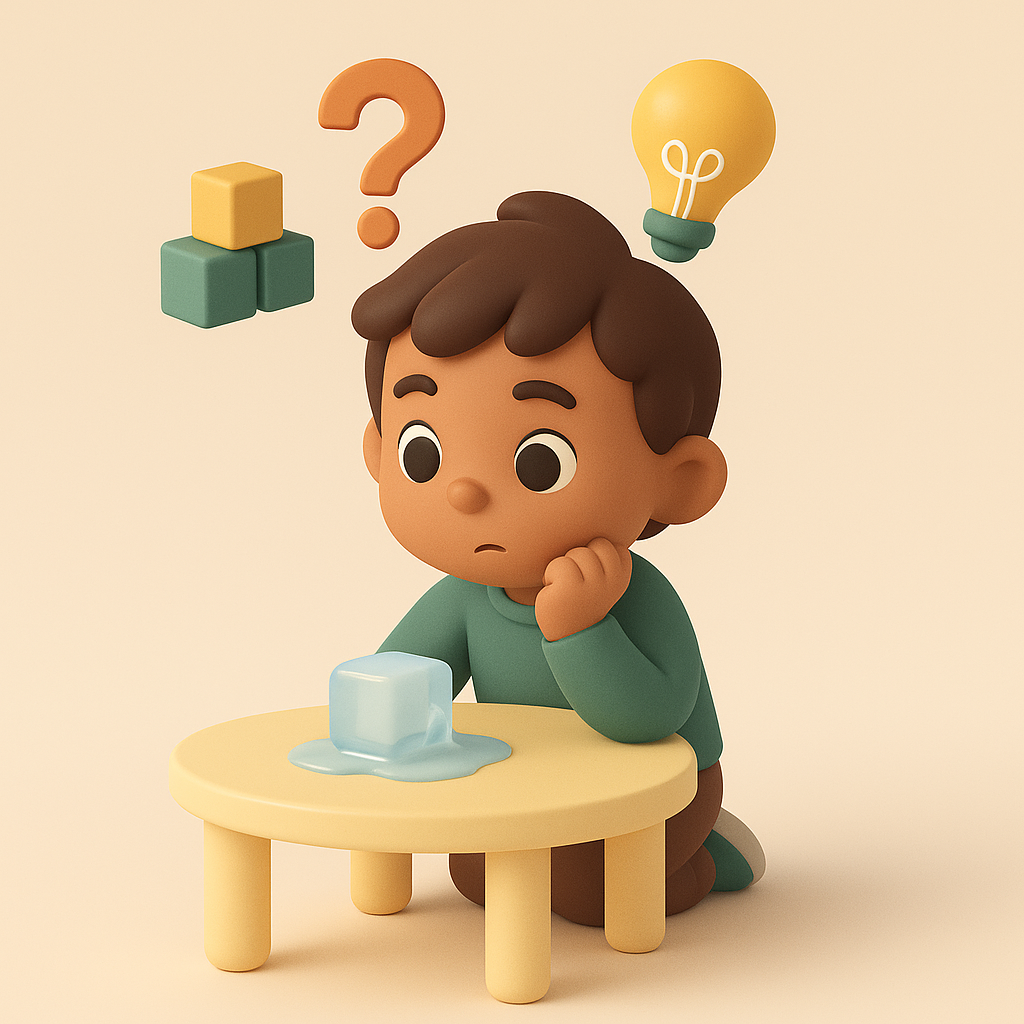
For young children, it means:
- Wondering why something happens (e.g., “Why did the ice melt?”)
- Thinking about different possibilities (“Maybe my toy is behind the couch or maybe it’s in the car”)
- Comparing ideas and outcomes (“I can build taller with the big blocks than the small blocks”)
- Using evidence from their experiences to make decisions (“I’m wearing rain boots because it’s wet outside”)
What’s important is being thoughtful and thinking about answers or solutions — not necessarily being correct every time. Critical thinking is inseparable from ethics, so kids start practicing thinking about these values, too. They learn to care deeply, help willingly, and recognize how actions affect others. Kids’ integrity, as they mature, is in large part rooted in their ability to think critically.
What is Problem-Solving for Young Kids?
Problem-solving is the ability to recognize a challenge, think through options, and try solutions, even when it’s hard. Resiliency and embracing a growth mindset are related life skills that support and intersect with problem-solving skills.
For young kids, that can look like:
- Figuring out how to build a taller tower (e.g., trying different shapes of blocks)
- Deciding what to do when a friend won’t share (offering another toy or asking for help)
- Trying different ways to zip a jacket or open a snack (Trying different methods or watching others)
Problem-solving also involves managing emotions like frustration or disappointment along the way, which is why emotional regulation plays a significant role in it. Studies also show a direct relationship between kids' problem-solving abilities and their performance in mathematics, aiding the cycle of confidence, curiosity, and capability throughout higher education and professional life.
Problem-solving is also about ownership. When kids are given space to recognize a problem, reflect on their role, and explore how to make it right, they build metacognitive strength and emotional maturity. By guiding kids to problem-solve rather than punish or discipline them into compliance, we help them grow into thoughtful, responsible decision-makers from the inside out.
Critical Thinking for Life, Not Just School
Critical thinking and problem-solving might come off a bit academic, but they’re everyday skills that shape how kids handle challenges, communicate with others, and grow into confident, capable people.
By early elementary school, kids are already making sense of complex social cues, digital content, and the emotions that come with learning something new. When they’re equipped to pause, reflect, and choose thoughtfully, not just react impulsively, they’re better prepared for nearly every part of life, from making friends to navigating online spaces.
These skills also support other key areas of development:
- Creativity: Thinking of new ideas, trying out “what ifs,” and experimenting with different outcomes.
- Empathy: Considering someone else’s perspective before making a decision.
- Digital literacy: Evaluating what’s true or trustworthy on a screen.
- Confidence: Trying again after something doesn’t work the first time.
When kids build these habits early, they carry them into school, relationships, and beyond. These skills give them the tools to thrive in an unpredictable world. We’re not trying to create perfect test-takers. We’re helping to raise future thinkers, leaders, and problem solvers. Critical thinking is a survival skill today, and the rising tides of misinformation and technology make its importance even greater for kids’ futures.
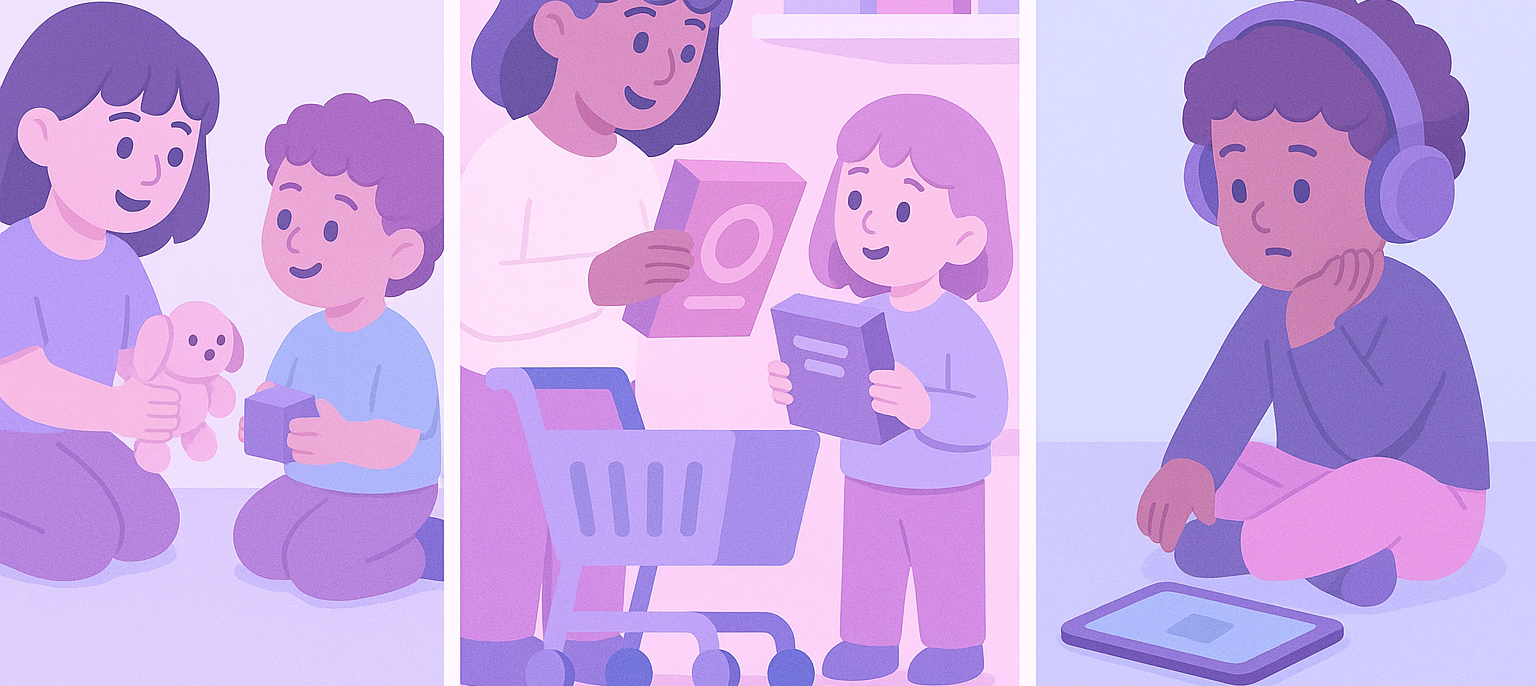
If they can pause, reflect, and make thoughtful decisions now, they’ll be better prepared for whatever’s ahead, including both opportunities and challenges. It’s helpful to see how quickly a young kid’s critical thinking practice can level up better preparedness in critical future situations. In their teenage years, they’ll need these skills for:
- Evaluating online content
- Peer pressure
- Homework and learning
- Time management
- Relationship drama
As a grown-up, they’ll encounter:
- Workplace decisions
- Media literacy
- Parenting choices
- Financial planning
- Health choices
Critical thinking is one of the most important lifelong skills kids need for a foundation that allows them to be their smartest, most thoughtful self — and a better human.
How to Teach Critical Thinking: Everyday Problem-Solving Exercises
The best opportunities to teach critical thinking often come in everyday moments. A disagreement over a toy, a “what if?” question at lunch, or a puzzle that doesn’t quite come together are all perfect ways to embed intentional problem-solving encouragement into your kids’ scenarios.
Here’s how to help your child practice thinking for themselves and working through challenges without judgment, panic, or perfectionism.
Create a Thinking-Friendly Environment
Kids are more likely to think critically when they feel safe, respected, and encouraged to explore. That means creating space for curiosity, mistakes, and different perspectives. You can:
- Welcome questions and encourage them through genuine curiosity
- Give kids time to think about answers and decisions, holding back the urge to rush in with an answer or correct them
- Celebrate the process and milestones on the way to solutions and discoveries
When we’re rooted with our kids in mutual respect and shared learning, we build the right environment to exercise thinking capacities.
Engage in Thoughtful Conversation
Don’t worry about having a script ready. Just engaging in casual, curious, patient conversations with kids is enough to spark critical thinking development. Open-ended questions help conversations go beyond “yes” and “no.” Try:
- “What do you think will happen next?”
- “How else could we try that?”
- “What would happen if we didn’t…?”
- “I’m not sure which cereal is cheaper — I’m going to look at the price per ounce.”
- “Why do you think the character did that? What could they have done instead?”
Thinking out loud, giving voice to your own critical thinking process, also helps kids internalize reasoning skills in real-time, with real-world examples they recognize.
Support Emotional Regulation & Reflection
Kids can’t think clearly when they’re overwhelmed, afraid, or ashamed. To build real problem-solving skills, we need to teach kids how to feel their way through frustration, not avoid it. This can look like:
- Helping kids name emotions in the moment
- Pausing and co-regulating — such as taking a breath together
- Reflecting on moments later on to understand what helped calm them down and what they will do next time
Discipline and guidance should always leave a child’s dignity intact. That’s how they build inner resilience, not just outer obedience.
Use Play and Games to Build Thinking Muscles
Nurture’s adventures help develop critical thinking through the questions we ask and the challenges we build into our storylines. When kids play, reflect, and try again, they’re not just playing a game for fun. They’re also building mental flexibility, emotional awareness, and curiosity about how the world works.
In addition to life skills learning on the Nurture app, kids can also build critical thinking skills by:
- Selecting open-ended toys like building blocks, costumes, or art supplies that encourage creativity and trial-and-error
- Playing strategy games or digital puzzles that require planning and persistence
- Peer and parent co-play and co-reflection that boosts engagement and learning
When kids play in intentional, yet low-pressure environments — solving mysteries, navigating choices, and revisiting challenges — they build problem-solving skills that help them thrive in every other area of their life.
And in between play, there are plenty of smaller everyday moments to spark flexible thought.
Everyday Scenarios That Encourage Thinking
Think about where we, as the grown-ups, spend most of our lives: at home, out and about, and in front of a screen. Kids are spending more time in front of screens, but that still provides plenty of opportunity to encourage thoughtful problem-solving.
Start with these common scenarios, then riff on them to find additional examples that work for your family.
At Home
The challenge: “I can’t get the lid off my marker.”
Instead of popping off the cap in the moment, ask him or her:
- “What have you already tried?”
- “Is there another way to open it?”
- “Want to work together on a plan?”
That helps them learn how to plan, evaluate effort, and adjust their strategies.
Another challenge: Two siblings are fighting over a toy.
Instead of stepping in with a verdict, try:
- “What’s a way you can both feel good about this?”
- “Do you want to take turns, trade, or work out a different plan together?”
That encourages collaboration, communication, and flexible thinking.
Out and About
The challenge: Kids ask why you choose between two brands of the same foods
Instead of just saying “It’s cheaper,” try:
- “What do you think the difference is between the two?”
- “Let’s look at the labels together — what do you notice?”
This helps them compare choices, weigh value, and understand trade-offs.
Another challenge: On a walk, your child sees yellowing leaves and asks why.
Instead of launching into an explanation, say:
- “That’s a great question — what do you think is happening?”
- “What could we do to find out more?”
That models curiosity, making a hypothesis, and following through with research.
Screen Time
The challenge: A game isn’t going their way, and they want to quit.
Instead of taking the controller or shutting it off, ask:
- “What part was the trickiest or most frustrating for you?”
- “Want to pause and talk through a new strategy?”
- “Can we talk about what isn’t working?”
That builds emotional regulation, persistence, and adaptive problem-solving.
Another challenge: Your child repeats something surprising or questionable from a video.
Instead of jumping into correction, try:
- “Where do you think that idea came from?”
- “Do you think that’s always true? What might someone else say?”
This supports media literacy, perspective-taking, and reflective thinking.
Common Caregiver Questions: Critical Thinking for Kids FAQ
Parents and caregivers don’t need a teaching degree or a set curriculum to help kids become great thinkers. By asking questions, you’re being a critical thinker yourself — already modeling the right things.
How are critical thinking and problem-solving related?
They’re closely connected. Critical thinking is about how a child reasons — asking questions, weighing ideas, making decisions. Problem-solving is what happens when they apply that reasoning to overcome a challenge. Kids use critical thinking to help them solve problems more thoughtfully and effectively.
When is the right age to start intentionally developing critical thinking?
Even toddlers ask “Why?” on repeat. It’s their earliest form of critical thinking. By ages 4–7, kids are developmentally ready to compare outcomes, test their ideas, and reflect on their decisions. The earlier they start practicing, the more naturally these skills develop.
What if my child gets frustrated easily or gives up quickly?
Frustration is part of the process. Thinking hard can feel uncomfortable at first, especially when the answer isn’t obvious. Support emotional regulation first (breathe, pause, co-regulate), then return to the challenge with curiosity: “What could we try differently?” You can also celebrate working through the frustration, emphasizing its role in learning how to think flexibly and persisting through problems.
Can screen time support critical thinking or problem solving?
When screen time is intentional, it can absolutely support critical thinking and problem-solving. The right kinds of digital experiences can give kids space to explore decisions, try different strategies, and reflect on outcomes. Well-designed games often model the very skills we want our kids to practice, such as logic, flexible thinking, and persistence through failure.
The key is how kids engage with screens — actively or passively. Are they thinking actively while they play?
Games with branching choices, puzzles, or resource challenges encourage kids to plan ahead, test ideas, and course-correct, which mirrors real-life problem-solving. Games geared specifically toward critical thinking might also include moments for emotional regulation, reflection, and co-play. You can find plenty of age-appropriate games that meet your kids’ developmental needs.
With the right content and conversations, screens are a tool, not a treat or a threat.
How do I know if my child is developing critical thinking skills?
You’ll see critical thinking developments in the little, everyday things. The way they ask “why,” how they approach everyday hiccups, and even how they react when something doesn’t go as planned all give clues. They don’t need to use big words or have perfect logic, but you’ll see them pause, wonder, and try new approaches instead of reacting impulsively or giving up quickly.
You might hear them say:
- “I already tried that. What if I…?”
- “Maybe I can do it another way.”
- “That didn’t work… but I have an idea.”
- “Can we figure it out together?”
You might notice them:
- Observing more closely before jumping in
- Asking thoughtful questions during storytime or play
- Repeating experiments in their own way (“What happens if I pour this here?”)
- Getting curious instead of frustrated when something is tricky
These moments show your child is beginning to think about their thinking — a skill known as metacognition. They’re not just acting automatically. They’re evaluating, adjusting, and learning to trust their own reasoning process.
If your child is slower to show these skills, don’t worry. Every child develops at their own pace, and consistent modeling, encouragement, and opportunities to reflect will help these abilities grow naturally over time.
Raising Critical Thinkers in the Digital Era
Critical thinking and problem-solving aren’t merely bonus skills, even if they’re not always taught at school. They’re essential for helping kids grow into confident, capable humans who can navigate an unpredictable world with curiosity, resilience, and heart. They matter when kids are resolving conflicts with friends, choosing what to believe online, or figuring out how to bounce back from frustration.
Find out how you can support other life skills by introducing them to Nurture and integrating them into your digital parenting approach.

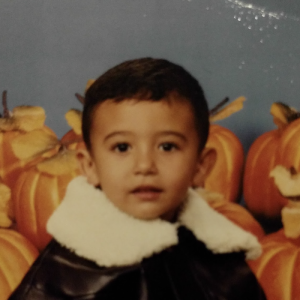
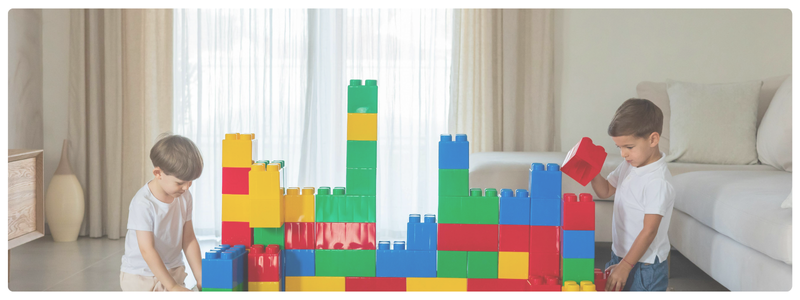


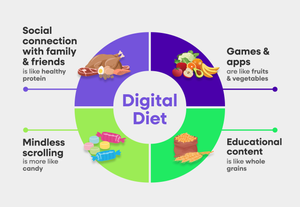
 Copy Link
Copy Link
 Share
to X
Share
to X
 Share
to Facebook
Share
to Facebook
 Share
to LinkedIn
Share
to LinkedIn
 Share
on Email
Share
on Email



